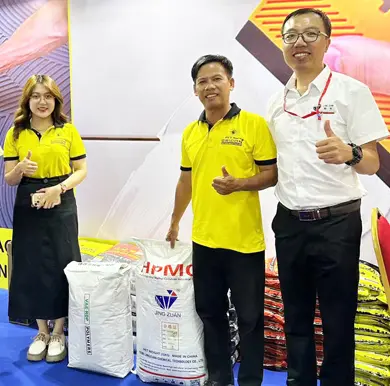
Oct . 07, 2024 15:33 Back to list
hpmc properties
Exploring HPMC Properties and Their Applications in Various Industries
Hydroxypropyl methylcellulose (HPMC) is a versatile cellulose ether that has gained significant attention in various industries due to its unique properties and multifunctional applications. As a non-ionic polymer, HPMC is derived from natural cellulose, making it an environmentally friendly option. It is primarily used as a thickening agent, film-forming agent, and binding agent across many sectors, including pharmaceuticals, food, cosmetics, and construction.
Physical and Chemical Properties
HPMC is characterized by its excellent solubility in cold and warm water, creating a gel-like consistency that can be utilized for different purposes. The degree of substitution in HPMC impacts its properties—higher substitution leads to increased solubility and lower viscosity. This makes HPMC highly adaptable, allowing formulators to customize its usage for specific applications. Its hydrophilic nature aids in moisture retention, making it a popular choice in products aimed at enhancing hydration.
One of the remarkable properties of HPMC is its rheological behavior. It exhibits pseudoplastic behavior, meaning its viscosity decreases under shear stress. This property is particularly beneficial in applications where ease of processing is critical, such as in the preparation of coatings, pastes, and gels.
Applications in Pharmaceuticals
In the pharmaceutical industry, HPMC is employed as a binder in tablet formulations, enhancing the stability and bioavailability of the active ingredients. Additionally, due to its film-forming properties, HPMC is also utilized in controlled-release formulations, allowing for the gradual release of medication over time. Its compatibility with various excipients makes it an invaluable component in drug delivery systems.
Role in Food Industry
hpmc properties

HPMC's role in the food industry is noteworthy as well. It is used as a thickener, emulsifier, and stabilizer in various food products, including sauces, dressings, and dairy items. HPMC is particularly favored in gluten-free formulations due to its ability to mimic the texture and elasticity typically provided by gluten. Moreover, it offers an extendable shelf life for processed foods by maintaining moisture content and preventing separation.
Benefits in Construction
In the construction sector, HPMC is used as an additive in cement-based products. It enhances water retention, workability, and adhesion properties of mortar and tile adhesives. By improving the flowability of these materials, HPMC ensures easy application while also promoting a robust final product. The incorporation of HPMC reduces the risk of cracking and improves the durability of constructions, making it a valuable ingredient in modern building materials.
Cosmetic Applications
In cosmetics and personal care products, HPMC is recognized for its thickening and stabilizing qualities. It is found in lotions, creams, and hair products, where it improves texture and enhances moisture retention. Its non-toxic nature and compatibility with a variety of formulations make it a preferred choice among cosmetic formulators aiming for high-quality products.
Conclusion
The versatile properties of HPMC widely expand its applicability across multiple industries. From pharmaceuticals to food and construction, its functional benefits contribute significantly to product quality and performance. As industries continue to seek innovative solutions, the demand for HPMC is expected to remain robust, making it a key ingredient in future formulations and applications. Its compatibility, environmental sustainability, and functional versatility solidify HPMC's role as an essential polymer in modern manufacturing processes.
-
Unlocking the Benefits of HPMC Products: A Gateway to Versatile Applications
NewsAug.07,2025
-
Unleashing the Potential of HPMC Ashland: A Comprehensive Look
NewsAug.07,2025
-
Tile Bonding Cellulose: The Key to Superior Adhesion and Durability
NewsAug.07,2025
-
Hydroxypropyl Methylcellulose Powder: The Versatile Component in Modern Pharmaceuticals
NewsAug.07,2025
-
Hydroxyethyl Cellulose: The Versatile Solution for Various Industries
NewsAug.07,2025
-
Hydroxyethyl Cellulose (HEC): The Versatile Polymer for Various Applications
NewsAug.07,2025







